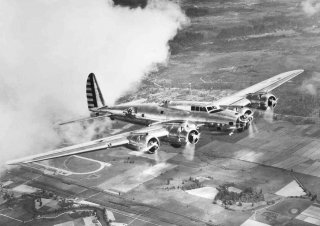Operation Aphrodite: How the Allies Turned Old Planes Into Flying Bombs During World War II
Radio-controlled flying bombs no less.
Old B-17 bombers were packed with explosives and turned into flying bombs to take out German U-boat pens and V-2 rocket sites.
Bombs Away
In 1943 and 1944, the German V-missile campaign was in full swing, with thousands of V-2 bombs hitting England in 1944 alone. Something had to be done—the V-2 assembly and launch sites had to be taken out. But how?
The plan was simple: use older B-17 Flying Fortresses that were no longer in active service as flying bombs. The B-17s were to be streamlined and optimized for flight as much as possible. Old airframes were stripped of everything superfluous in order to maximize the amount of explosives they could carry.
Everything was pulled out—seats, ammunition and bomb storage racks, armor plating, machine guns, everything. This saved an estimated six tons of weight that could be filled with more explosives. The explosive of chose was the British-made Torpex explosive, 50% more powerful than TNT. Torpex is a mixture of TNT, powdered aluminum, and RDX, an early plastic explosive. To fly the huge bombs, remote control equipment was added, and a pair of television cameras were strapped to the cockpit to provide the ground pilot with visual aids while flying.
Major General James “Jimmy” Doolittle of Doolittle Raid fame was shown plans for the remote-control bombs. He heartily approved.
In Flight
Getting the big bombs airborne was tricky, and the radio controls were too finicky to reliably get the old B-17s airborne. In order to get them aloft a pilot and flight engineer—both volunteers—would have to get the big plane airborne. Once airborne, they would turn controls over to a ground-based pilot and arm the explosives. After these steps had been taken, both the pilot and the engineer would bail from the plane through the cockpit canopy, which was removed.
Operation Aphrodite was unsuccessful. A total of 14 missions were flown against targets in Germany or German-occupied Europe. U-boat pens and V-1 or V-2 assembly and launch sites were targeted, though none of the B-17s reached their destination, with several flying out of control and crashing, or being taken down by German anti-aircraft guns.
Perhaps the most noteworthy event of the Operation Aphrodite program involved the accidental death of Joseph P. Kennedy, Jr., the eldest brother of future President John F. Kennedy. Joseph Kennedy, then a Lieutenant, was a volunteer pilot for the B-17 program. He and another volunteer flight engineer were killed when the B-17 they were flying prematurely exploded several minutes after they had armed the onboard explosives, instantly killing both men.
Postscript
Operation Aphrodite was an unmitigated failure. The B-17 flying bombs were not as effective as the British-designed bunker-buster bombs that ended up taking out the targets earmarked for B-17s. Still, they represent an interesting early attempt at both precision-guided munitions and drones.
Caleb Larson holds a Master of Public Policy degree from the Willy Brandt School of Public Policy. He lives in Berlin and writes on U.S. and Russian foreign and defense policy, German politics, and culture.
Image: Wikimedia

